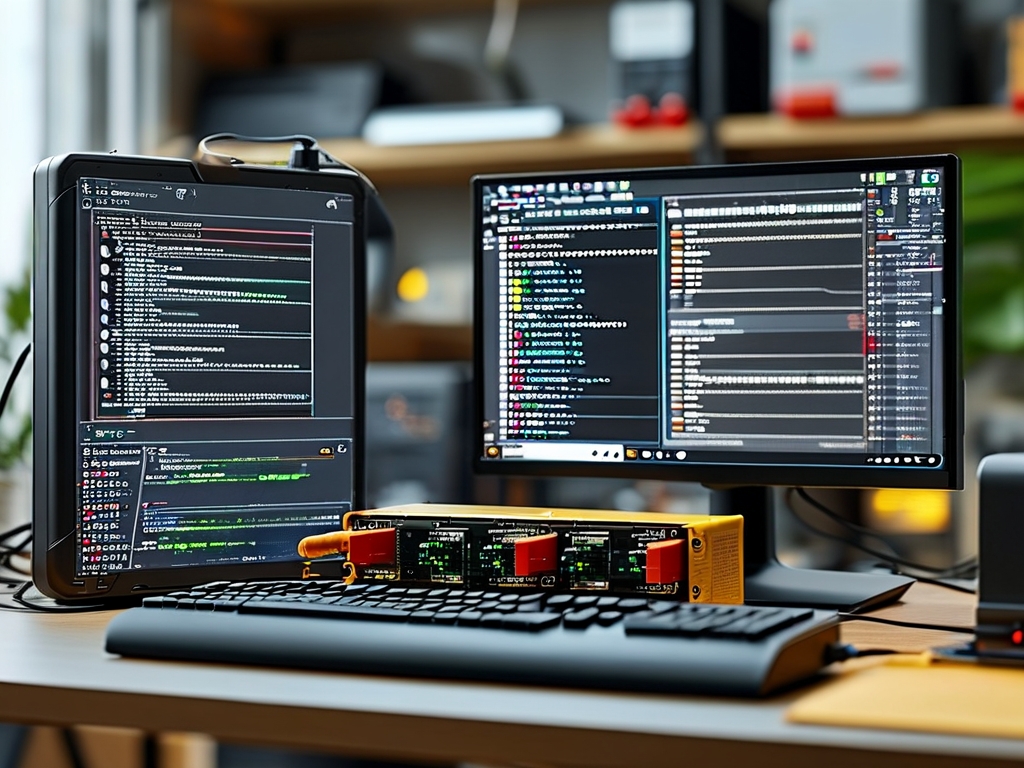The integration of programmable logic controllers (PLCs) with remote embedded modules has revolutionized industrial automation, enabling smarter factories and energy-efficient operations. This article explores cutting-edge approaches to developing PLC-based remote embedded systems, emphasizing practical implementation and technical innovation.
The Evolution of PLC-Embedded Integration
Modern industrial environments demand seamless communication between PLCs and distributed devices. Remote embedded modules bridge this gap by extending control capabilities to edge devices while maintaining centralized oversight. Unlike traditional wiring-heavy setups, these modules leverage wireless protocols like LoRaWAN or MQTT to transmit sensor data and execute commands. For instance, a temperature sensor in a chemical plant can relay real-time data to a central PLC via an embedded communication module, triggering automated cooling systems when thresholds are exceeded.
Core Development Principles
Developing robust PLC remote modules requires adherence to three principles:
- Hardware-Software Co-Design: Optimize firmware algorithms to match the processing limits of microcontrollers like STM32 or ESP32. For example, a motor control module might use pulse-width modulation (PWM) code tailored to reduce CPU load.
- Protocol Flexibility: Support multiple industrial communication standards (Modbus TCP, OPC UA) within a single module. This ensures compatibility with legacy systems and new IoT platforms.
- Security by Default: Implement AES-256 encryption for data packets and secure boot mechanisms to prevent unauthorized firmware modifications.
A sample code snippet for Modbus RTU communication in a remote module illustrates this approach:
void handleModbusRequest(uint8_t* frame) {
if (frame[1] == 0x03) { // Read holding registers
uint16_t regAddress = (frame[2] << 8) | frame[3];
uint16_t regValue = readSensorData(regAddress);
buildModbusResponse(regValue);
}
}
Overcoming Deployment Challenges
Field testing reveals two persistent hurdles: signal latency in high-interference environments and power consumption for battery-operated modules. Engineers address these by employing adaptive frequency-hopping spread spectrum (AFHSS) techniques and low-power modes. For instance, a water-level monitoring module in a remote reservoir might activate only hourly, extending battery life from weeks to months.

Case Study: Predictive Maintenance in Manufacturing
A automotive assembly line reduced downtime by 37% using PLC-connected vibration analysis modules. These embedded devices processed Fast Fourier Transform (FFT) algorithms locally to detect bearing wear, transmitting only anomaly alerts to the main PLC. This edge computing approach minimized network congestion and enabled real-time decision-making.
Future Directions
The convergence of PLC systems with AI accelerators opens new frontiers. TinyML frameworks like TensorFlow Lite are being ported to embedded modules, enabling on-device machine learning for quality control. Additionally, 5G’s ultra-reliable low-latency communication (URLLC) will enhance remote module responsiveness in critical applications like robotics.

In , PLC remote embedded module development hinges on balancing performance, security, and adaptability. As industries embrace Industry 4.0, these modules will serve as the nervous system of smart manufacturing, transforming raw data into actionable intelligence while operating unseen in the background.









